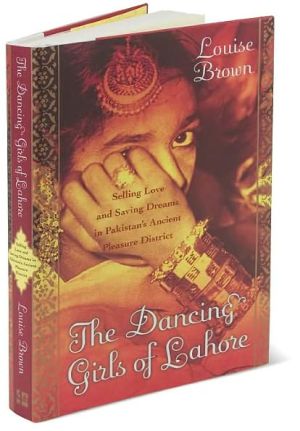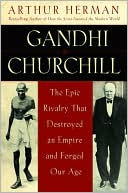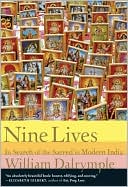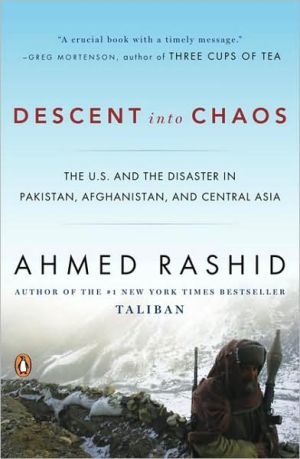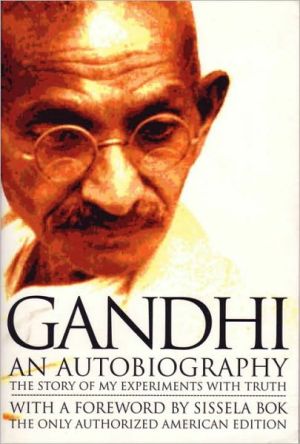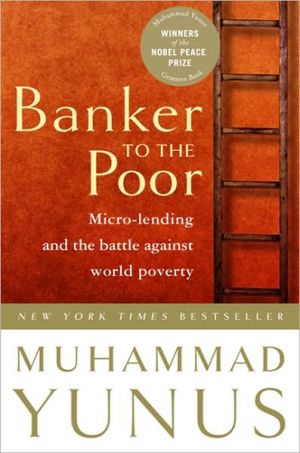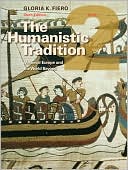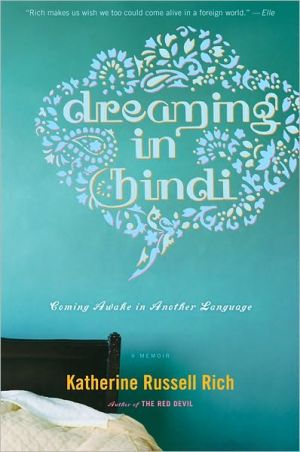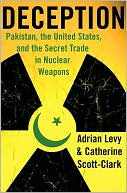Dancing Girls of Lahore: Selling Love and Hoarding Dreams in Pakistan's Ancient Pleasure District
The dancing girls of Lahore inhabit the Diamond Market in the shadow of a great mosque. The twenty-first century goes on outside the walls of this ancient quarter but scarcely registers within. Though their trade can be described with accuracy as prostitution, the dancing girls have an illustrious history: Beloved by emperors and nawabs, their sophisticated art encompassed the best of Mughal culture. The modern-day Bollywood aesthetic, with its love of gaudy spectacle, music, and dance, is...
Search in google:
By the standards of almost any culture, particularly their own, they are unclean. They are born into the business, and the sale of their virginity, and their daughters' virginity, is often necessary for their family's survival. Their lives are proscribed and in that small space often chaotic, especially when they dare to behave for one second like other women. Brown (sociology, Birmingham U.) writes with a novelist's sense of what is important in her account, taken from four years of diaries of her experiences living with a family of prostitutes in Lahore, Pakistan. She does not flinch from the reality of the women's situation, but she is also sensitive to their ability to live on hope, in many cases, the hope of a time when they will not be bought and sold. Annotation ©2005 Book News, Inc., Portland, OR The Washington Post - Lily Burana Brown's sensual acuity -- detailing the smell and texture of spiced gravy, the intricate embroidery on a dress, the gritty dankness of the alleyways -- make this a fascinating ethnography with Bollywood flair, even at its darkest moments. At times, the author trips over herself -- she knows she's supposed to be an impartial observer, but the hardships weigh her down. Her vulnerability adds to her authority, however. In circumstances as grim as these, a dispassionate tour guide is not to be trusted.
"We Were Artists . . . Not Gandi Kanjri"\ (Hot Season: April - June 2000)Lahore is a wonderful city with rich character and a worn charm. The Mughal Empire has bequeathed some glories to the modern city: the awe-inspiring Badshahi Masjid; the imposing Shahi Quila, or Royal Fort; the pretty Shalamar Gardens; and the now dilapidated tombs of Emperor Jahangir and his empress, Nur Jahan. Grand buildings inherited from the British raj sit in stately, shabby order on the broad, leafy Mall Road running through the center of town. New suburbs have grown -- some affluent and some not. The streets and markets bustle and hum with life and the mosques and mausoleums are always busy. Best of all, though, is this ancient place -- the Walled City -- a quarter of a million people squeezed into a square mile of congested tenements and shops. It is the heart of Lahore and it carries the city's soul.Old Lahore can't have changed much for centuries. The moat was filled in long ago and the defensive walls have gone, but the residents, constrained by ancient land boundaries and historical memory, continue to build their houses as if the walls still exist: an ageless and invisible presence. The thirteen gates into the city remain too, channeling pedestrians and traffic from the wide roads of contemporary Lahore into the narrow lanes and alleys of the Walled City. Rickshaws, horse-drawn carts called tangas, motorbikes, and small vans compete with pedestrians for space inside the walls. No vehicles of any kind enter the narrowest alleys.Neither does the sun. Only in the wider lanes and the bazaars does the sun shine directly on the ground. Most of the small passages running through the city lie in perpetual, dusty gloom. Early morning is the best time to see the old city. During the hot season there are a couple of hours before the temperature soars and the lanes become too congested. The city wakes up and life unfolds in much the same way it must have done hundreds of years ago. The shopkeepers are busy: the butchers slice up chickens and goats, the tea shops open and the bakers prepare halva and fry puri for the first meal of the day. The fruit and vegetable sellers arrange their produce in a kaleidoscope of bright colors: plump aubergines, mooli, red carrots, sweet firm tomatoes, bundles of spinach, fresh okra, and leafy bunches of coriander and mint. Donkey carts rattle and creak down the galis, the narrow lanes, delivering goods: large round metal pots carrying milk from the villages; another piled high with sacks of flour and rice. A rickshaw whose only passengers are a dozen frantic hens stops and the goods are thrown, squawking, into the back room of a butcher's shop. In the little workshops men and boys are already at work by seven o'clock, grinding bits of metal, heating syrupy liquids over open fires, sticking unidentified items together. It is gray, dirty, repetitive work and it lasts for most of their waking day. Heera Mandi -- the Diamond Market -- is a crumbling ghetto of three- and four-storey buildings tucked into the northern corner of the Walled City, right next to one of the greatest forts of Mughal India and its biggest, most perfectly proportioned mosque. The old women living here say it has been the red-light district for as long as they can remember and it flourished long before the British arrived in the mid-nineteenth century. Heera Mandi, also known as Shahi Mohalla, was important then, and in its heyday it trained courtesans who won the hearts of emperors. The old ladies insist that things used to be different in those times: women like them were respected. They were artists, not gandi kanjri -- not dirty prostitutes. I have a room in the home of Shahi Mohalla's most famous resident, Iqbal Hussain, a professor of fine art who paints portraits of the women of Heera Mandi. When I came to Lahore previously it was Iqbal who taught me most about prostitution in Pakistan and about life in the mohalla. He is an authority on the subject because he lives and breathes it: it's in his blood. He is the son of a courtesan and has spent over half a century in Heera Mandi, growing up in this house that lies in the shadow of the mosque and in the longer shadow of social stigma. His friendship gives me some protection now that I've returned to stay in the mohalla and witness its life first-hand. Iqbal's house expands, month by month, as he scours the construction sites of the Walled City, collecting windows, doors, statues, and tiles from ancient, demolished havelis -- the graceful traditional homes of the rich. He incorporates these fragments into his home, so it has become an eclectic fusion of Hindu, Muslim, and Sikh design. My room, on the third floor of the house, overlooks the biggest courtyard in Heera Mandi. It's the most beautiful room. It has three bay windows, each fitted with tiny panes of colored glass. The furniture and doors are of carved wood and the giant floor cushions, bolsters, and heavy curtains are made of golden and burgundy brocades. This room, like the whole house, has been assembled from pieces and images of old Lahore. On the ground floor of the house Iqbal runs a restaurant where young couples meet for forbidden romantic liaisons during the afternoon. They sit in the back room and drink bottles of 7-Up in the summer and cups of coffee in the winter. The boys talk a lot and the girls giggle without reason or pause. In the evening most of the visitors are groups of well-heeled, arrogant men. At other times entire families come for an outing bringing Grandma, the babies, and assorted uncles and aunts. They dine at long tables and then traipse up to the roof to look at the Badshahi Masjid and the fort. As they pass my room I hear them puffing and complaining that the climb is steep and that there are a crippling number of steps.
\ From Barnes & NobleBarnes & Noble Discover Great New Writers\ A great journalist takes readers places they've never been before, while a great writer makes them feel as though they're really there. Brown qualifies on both counts, as evidenced by her groundbreaking foray into the lives of the women of Heera Mandi, a red-light district in Lahore, Pakistan.\ \ An academic researcher who has studied prostitution globally, Brown spent four years gathering materials for The Dancing Girls of Lahore, and informs readers that this red-light district dates from ancient times, when courtesans would vie for the hearts of sultans and emperors. The older women like to remember themselves as artists. "Their skills had nothing to do with sex -- except, perhaps, sometimes." But today Heera Mandi is a run-down, congested, dangerous ghetto where women are born into the profession with scant hope of escaping. \ \ Brown's depiction of these "dancing girls" is as gripping as it is devastating. She describes the influence of the local drug trade and the filthy conditions in which the women live, and readers sense her struggle with her role as an observer when she desperately wishes to save one young girl from a dismal future. The Dancing Girls of Lahore is essential reading, because it forces its readers to see that regardless of how much women have achieved in many parts of the world, there's still much progress to be made. (Fall 2005 Selection)\ \ \ \ \ Washington Post"A fascinating ethnography with Bollywood flair, even at its darkest moments."\ \ \ Washington Post“A fascinating ethnography with Bollywood flair, even at its darkest moments.”\ \ \ \ \ Lily BuranaBrown's sensual acuity -- detailing the smell and texture of spiced gravy, the intricate embroidery on a dress, the gritty dankness of the alleyways -- make this a fascinating ethnography with Bollywood flair, even at its darkest moments. At times, the author trips over herself -- she knows she's supposed to be an impartial observer, but the hardships weigh her down. Her vulnerability adds to her authority, however. In circumstances as grim as these, a dispassionate tour guide is not to be trusted.\ — The Washington Post\ \ \ \ \ William GrimesMs. Brown, author of Sex Slaves: The Trafficking of Women in Asia, has a sociologist's eye and a novelist's appreciation of her surroundings and the human drama that plays out before her. She spends nearly as much time describing the street foods of Lahore and the excitement of religious festivals as she does analyzing the grim economics of the sex trade. Her main character, Maha, a prostitute on the downward side of her career, comes alive in all three dimensions, fully realized in the circumscribed world that has defined life for her mother, grandmother and great-grandmother before her. Prostitution, in Heera Mandi, is a family profession.\ — The New York Times\ \ \ \ \ Library JournalGenerally, it is not a good idea to publish one's field notes before the scholarly work is complete, as the notes depend on the idiosyncratic view of the researcher, who is still swimming in details. Yet Brown (sociology, Univ. of Birmingham, England) has apparently chosen that route. Ranging from rats in the parlor to abortion by kicks in the belly, her account of the raw minutiae of one prostitute family in Lahore, Pakistan, is structured according to the chronology of the author's visits from 2000 to 2004. The historical and sociological context for these sad, gaudy lives is never properly spelled out, so readers are left baffled by events and customs that are mentioned but never explained or revisited. As a result, the book is painful, verging on the voyeuristic, and unedifying. Libraries with an audience interested in women's roles or prostitution in Lahore should select instead Jasmin Mirza's Between Chaddor and Market and Fouzia Saeed's Taboo!: The Hidden Culture of a Red Light Area.-Lisa Klopfer, Eastern Michigan Univ. Lib., Ypsilanti Copyright 2005 Reed Business Information.\ \ \ \ \ Kirkus ReviewsBritish sociologist Brown documents the sex-trade in Lahore. Meet Maha, a middle-aged mother who lives and works in the walled city at the heart of Lahore. Her trade? She's a dancing girl-that is, prostitute. But having hit her 30s and put on a few pounds, she can no longer command the prices she needs to keep her children fed. Three of her daughters are teenagers, though, the perfect age to begin servicing their own clients. Indeed, a future of prostitution is all these girls have ever expected, and they're not well enough educated to do much else. Brown spent four years with Maha and her family, trying to understand the lives of women in Lahore's red-light district. The result is a harrowing and heartbreaking story. Brown manages both to expose the horrors of the women's circumscribed lives and to show that Maha and her daughters are complicated, smart, tough-victims of a horrible system, yes, but also, simply, people, no less multidimensional than anyone else. While the result is more ethnographic reportage than memoir, one of the most fascinating threads is Brown's own changing relationship with her ostensible subjects. Over the four years, Maha becomes Brown's friend, and Brown finds herself, occasionally, in a moral quandary. For example, one of Maha's daughters, Nena, is being sent to Dubai, where she is to have sex with a high-paying virgin-fiend. Selling one's virginity to a high-bidder in the Gulf is nothing uncommon, and Nena claims she's happy about the transaction: she's relieved that her family will finally have a little money. But Brown is beside herself: "Nothing has prepared me for the reality of this event," and she doesn't know where her role as sociologist stops andthat as a friend who might intervene starts. Riveting and important. Even readers who don't think they're interested in Pakistani prostitution will find themselves engrossed.\ \
